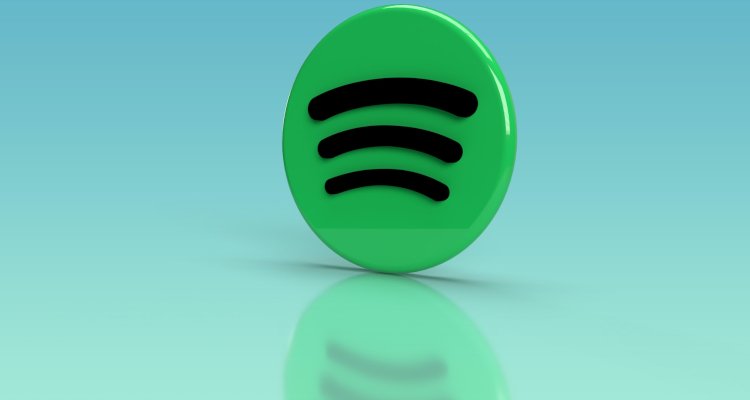Spotify Will Cease Paying Royalties for an Estimated 2/3rds of Its Catalog Under Reported Q1 2024 Changes


Spotify royalties are reportedly set to cease reaching over two-thirds of on-platform tracks under a revamped compensation system next year. Photo Credit: Bastian Riccardi
A prominent distributor has provided new information about Spotify’s reported plans to revamp its royalties framework next year. And according to estimates, the pivot could see the platform cease paying for streams on over two-thirds of its catalog.
Confirmation of (and additional details about) Spotify’s much-discussed compensation adjustments just recently emerged in an opinion piece penned by Stem president Kristin Graziani. Arguing in the op-ed that the changes will in fact benefit artists, Graziani also acknowledged the “three new policies” that Spotify is expected to roll out “in 2024.”
As reported by Digital Music News last month, these policies include penalizing labels and distributors for fraudulent streams and setting a higher minimum play time before any white noise track (as well as similar uploads) will register a stream.
On the former front, certain labels and distributors will reportedly be slapped with a penalty of some sort when they make available content flagged for artificial streams. Of course, it’ll be interesting to see the precise rules and enforcement details at hand; major-label tracks will presumably be spared from ample scrutiny (or at least ample penalties) in this department.
And regarding the second point, roughly 30-second-long white noise snippets have for years been racking up millions of streams and sizable royalty payments. By increasing the playtime necessary to trigger a stream – the exact length remains to be seen – it appears that Spotify will effectively remove many of the uploads from the royalty pool.
The most noteworthy of the three “policies,” however, involves the annual stream-count threshold that tracks must surpass in order to generate Spotify royalties.
Though last month’s coverage acknowledged the change itself, Graziani attached a specific figure, 1,000 plays during the prior 12 months, to the requirement. Running with the number and data made publicly available by Spotify, around two-thirds of the platform’s 100 million or so tracks (as of 2022’s conclusion) haven’t hit the minimum to date, let alone in the necessary timeframe.
Even so, Billboard, citing an anonymous source, has claimed that the new payout approach would shift only “about 0.5% of Spotify’s royalty pool to more popular tracks.” Meanwhile, the aforementioned piece from Stem’s president expanded upon the point, maintaining that the income attributable to 1,000 annual streams, approximately $3.00, “is well below the threshold at which” most distributors allow artists to transfer funds to their bank accounts.
Notwithstanding this optimistic outlook, others in the industry have raised concerns about streaming-compensation alterations developed with the majors. Believe CEO Denis Ladegaillerie, for instance, has signaled that his company won’t enroll in Deezer’s “artist-centric” model despite a clear-cut financial incentive for doing so.
Said model, which Deezer created in collaboration with Universal Music Group, stacks the deck against a number of acts, new and emerging artists chief among them, Ladegaillerie indicated. While the system differs in several key ways from that which Spotify’s reportedly prepping, both approaches could at some point see their respective thresholds increase – boxing out more creators yet.
Additionally, as tracks continue to pour onto Spotify in droves, it’ll become increasingly difficult for new artists to stand out from the crowd and earn anything at all from their music’s streams. Bearing in mind the point, 2024 could bring with it significant moves from well-financed competitors that have for some time been positioning themselves for success on the indie side.
Link to the source article – https://www.digitalmusicnews.com/2023/11/06/spotify-royalties-impact-2024/
Recommended for you
-
Officially Licensed Michael Anthony Jack Daniels JD Bass Mini Guitar
$40,90 Buy From Amazon -
GraphTech PT606000 TUSQ XL Black Self-Lubricating Slotted Nut, Epiphone Style
$12,77 Buy From Amazon -
Korg VOLCA SAMPLE2 Digital Sampler (VOLCASAMPLE2)
$143,99 Buy From Amazon -
Mellbree MIDI Cable, 2-Pack 3-Feet Male to Male 5-Pin MIDI Cable Compatible with MIDI Keyboard, Keyboard Synth, Rack Synth, Sampler, External Sound Card, Sound Source and Other Music Gear
$9,99 Buy From Amazon -
Enya Soprano Ukulele 21 Inch Carbon Fiber Travel Ukelele Nova U Mini Simple Yukalalee With Beginner Kit includes Case Strap Capo Strings Professional Ukalalee Yukalalee
$49,99 Buy From Amazon -
Deering Goodtime 2 LEFT HANDED 5-String Maple Resonator Bluegrass Banjo with Hard Case Instrument Alley Combo
$749,00 Buy From Amazon -
ADAM Audio T7V Studio Monitor for recording, mixing and mastering, Studio Quality Sound (Single)
$249,99 Buy From Amazon -
VANPHY Soprano Ukulele for Kids 21 Inch Ukelele with Bag Strap Picks Songbook Cleaning Cloth Suitable for Adults and Beginnersï¼Light Pinkï¼
$38,99 Buy From Amazon













Responses